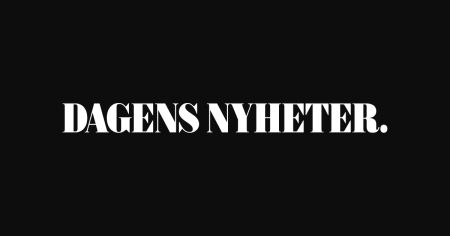Dagens Nyheter, a prominent Swedish daily newspaper, carries a unique punctuation mark in its name – a period after the phrase ”Dagens Nyheter,” which translates to ”Today’s News.” This seemingly minor detail holds a significant historical and philosophical weight, tracing back to the newspaper’s inception on December 23, 1864. Rudolf Wall, the founder of Dagens Nyheter, deliberately included the period to signify more than just a name; it symbolized the completion of a thought, a definitive statement of the day’s events. This deliberate punctuation choice reflects the newspaper’s commitment to presenting the news as a concluded narrative, a record of what has transpired. The period serves as a reminder of the newspaper’s role in chronicling the past, encapsulating the day’s happenings into a finalized account. In maintaining this tradition, Dagens Nyheter underscores its enduring connection to its founding principles, preserving a historical marker that embodies the essence of its purpose.
The persistence of this seemingly insignificant punctuation mark underscores the newspaper’s commitment to its foundational values. In a rapidly changing media landscape, where news cycles are compressed and information flows ceaselessly, the period serves as a symbolic anchor. It represents a dedication to the traditional journalistic ideal of providing a comprehensive and conclusive account of the day’s events. This dedication to thoroughness and finality stands in contrast to the often fragmented and evolving nature of online news, where updates and corrections constantly reshape the narrative. The period, in its steadfast presence, asserts the newspaper’s commitment to delivering a definitive version of the news, a complete story for the day.
The period also speaks to the evolving nature of news itself. In the digital age, news is often presented as a continuous stream, a never-ending cycle of updates and breaking information. The traditional concept of a ”news day” has become blurred, as information becomes available instantaneously and globally. Yet, Dagens Nyheter, by retaining the period, reaffirms its belief in the importance of providing a structured and conclusive narrative. It suggests that amidst the constant flow of information, there remains a value in presenting the news as a completed cycle, a record of what has transpired within a defined timeframe.
This commitment to a conclusive narrative is further emphasized by the carefully curated structure and organization of the newspaper. Each section, from politics and culture to international affairs, is presented as a complete package, offering in-depth analysis and reporting on the day’s key events. The newspaper’s editorial staff, led by individuals like Peter Wolodarski, Anna Åberg, and Anders Eriksson, ensures that each story is thoroughly researched, accurately reported, and presented within a clear context. The meticulous attention to detail, from the selection of topics to the crafting of headlines, reflects the newspaper’s dedication to providing a comprehensive and well-rounded account of the day’s news.
Furthermore, the period after ”Dagens Nyheter” can be interpreted as a symbol of authority and credibility. In a world increasingly saturated with misinformation and biased reporting, the period represents the newspaper’s commitment to journalistic integrity. It acts as a seal of authenticity, a guarantee that the information presented within its pages has been carefully vetted and verified. The continued presence of this punctuation mark reinforces the newspaper’s reputation as a reliable source of information, a trusted voice in the public discourse. It signifies the newspaper’s dedication to upholding the highest standards of journalistic ethics, ensuring accuracy, fairness, and objectivity in its reporting.
In conclusion, the seemingly insignificant period after ”Dagens Nyheter” carries a profound significance. It represents not only a historical connection to the newspaper’s founding principles but also a philosophical statement about the nature of news itself. In a world dominated by the constant flow of information, the period serves as a reminder of the importance of providing a conclusive narrative, a complete account of the day’s events. It is a symbol of the newspaper’s commitment to thoroughness, accuracy, and journalistic integrity, a small but powerful punctuation mark that embodies the essence of Dagens Nyheter’s mission to inform and enlighten its readers. The period signifies the end of a cycle, the completion of a day’s reporting, and the promise of a new narrative to unfold with the next edition. It is a testament to the enduring power of traditional journalism in an age of digital disruption, a symbol of clarity and finality in a world of constant flux.














